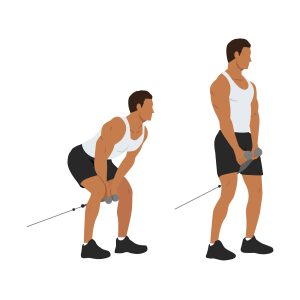
Got Fitness Goals?
The Simple, But Mighty Cable Machine Can Help You Meet Them!
What is the Cable Machine?
Whatever you call it, it’s a piece of weight training equipment that’s designed to mimic real-life movements and is ideal for functional training. The weight stack is raised and lowered with the cable and pulley system, and the cables run through adjustable pulleys that can be set to any height. The user can attach a handle or a bar to the cable to perform exercises.
In some gyms, the cable machines have connected benches. In others, you can add outside weight plates to the system. There are a variety of attachments available, like pull-down bars, hand grips, ankle straps, and rope attachments. But the bottom line is that if you’ve found the machine with the flat, brick-shaped weights and pulleys, you’ve found the cable machine.
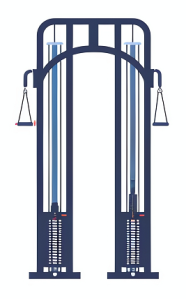
The Art and Science of the Cable Machine
When it comes to building strength and achieving muscle definition, cable machines are one of the most valuable pieces of equipment in the gym. For anyone who’s ever wondered how to take their workouts up a notch, cable machines offer the answer: these versatile machines provide constant resistance, improved range of motion, and greater control, making them great tools for targeting specific muscle groups.
Cable machine exercises aren’t just for the seasoned gym goer, they offer benefits to all fitness levels. Here’s why they’re worth adding to your routine:
Cable Machine Basic Attachments
Straight Bar: Great for exercises like lat pulldowns, biceps curls, and triceps press-downs. A straight bar is excellent for building strength with controlled movements.
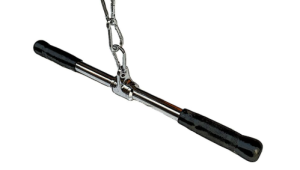
Rope Attachment: Perfect for triceps extensions, face pulls, and cable crunches. The rope lets your wrists move naturally and helps target those smaller stabilizer muscles.
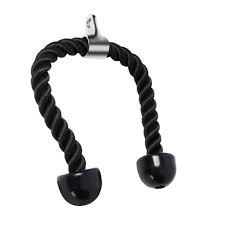
Ankle Strap: Ideal for glute kickbacks, leg abductions, and hamstring curls. An ankle strap helps isolate and strengthen your glutes and legs.
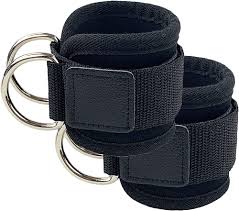
Single Handle: Use this for single-arm exercises like shoulder raises, chest flies, and pulldowns. This attachment is great for training each side of your body separately and keeping things balanced.
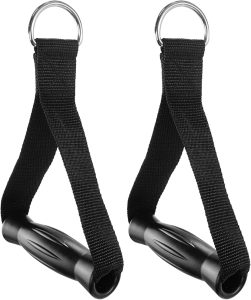
Mastering the Cable Machine: Cire’s Essential Exercises
So, let’s dive into the art of the cable machine. Whether you’re a beginner or an experienced lifter, mastering this piece of equipment can help you achieve balanced muscle development, improve strength, and keep you safe from unnecessary strain and injury.
Some initial trial and error is key to figuring out how much weight you should use for each exercise. To begin, choose a weight that lets you complete about seven smooth reps before you reach your limit and start to lose your form. When you can perform 10-12 reps smoothly with good form, it’s time to increase the weight.
Here are seven of Cire’s recommended, easy-to-follow cable machine exercises that will keep you motivated and make you stronger.
Cable Biceps Curl
Setup: Attach a straight bar (or a single handle) to the low pulley. Stand facing the machine, holding the bar with your palms up.
Movement: Curl the bar up toward your shoulders, keeping your elbows close to your body. Slowly lower the bar.
Focus: Biceps
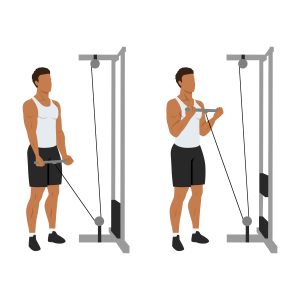
Cable Chest Fly
Setup: Stand centered between two pulleys with the handles set at chest height.
Movement: With a slight bend in the elbows, bring your arms together in front of your chest. Slowly return to the starting position.
Focus: Chest, pectoral muscles
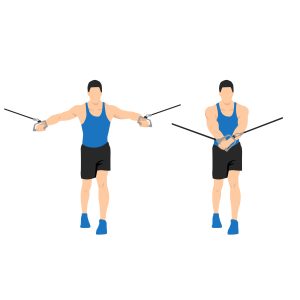
Cable Triceps Pushdown
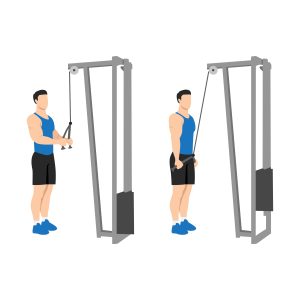
Cable Face Pull
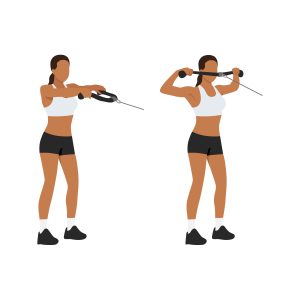
Cable Kickback
Setup: Attach an ankle strap to the low pulley and fasten around your ankle. Stand or get on your knees facing the machine.
Movement: Extend your strapped leg back, squeezing your glutes at the top. Slowly return to where you started.
Focus: Glutes, hamstrings
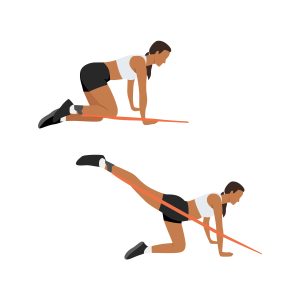
Cable Hip Adduction
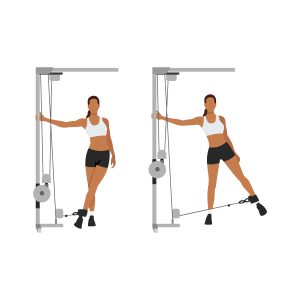
Cable Pull Throughs
Movement: Hinge at the hips and push your glutes back, lowering your torso while keeping a slight bend in your knees. Pull the rope forward and upward as you thrust your hips forward, squeezing your glutes at the top of the movement. Slowly return to the starting position.
Focus: Glutes, hamstrings, and lower back
